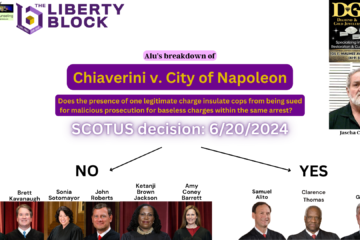Most states don’t respect your liberty. If you live in one that’s worse than average, there are ways to improve things. After you’ve given up on the idea of getting control of the state legislature, your first impulse might be to move. But you’ve invested years in relationships where you live: family, friends, employers, and shops.
Your second impulse might be to to get your part of the state to secede and become a new state. That’s almost certainly a dead-end under current conditions. A state legislature where Democrats have significant power won’t want to give a liberty-loving group of counties 2 US Senators. Even if Democrats briefly lost control of your legislature, would Congress approve? Even if Republicans regained control of Congress, from the point of view of US Senators, giving extra senators to every state that is willing to become multiple states is a dangerous precedent that would dilute the voice of their own state. This is all the more true today, when progressives are looking for ways to ameliorate their disadvantage in the electoral college. (The number of electors states may send to the presidential electoral college is equal to the number representatives and senators those states have.)
We like two other ideas. The first idea was introduced as a bill this year by New York state assemblyman David DiPietro. New York would split into three independent districts, each with its own governor and legislature — but would remain one state for the federal government’s purposes. It would still have 2 US senators. But the NY constitution would be totally revamped to split the state in every other way. Each district would have its own governor, state legislature, state laws, state judiciary, state budget, state pensions, etc. Since the district borders were chosen based on culture and ideology (as well as geography), some districts would be relatively liberty-loving. Di Pietro chose 3 districts. Two might be adequate for your state.

Why would your state agree to this? Most rural sections of a state have lower incomes and lots of Trump voters. The urban section of your state might be willing to get rid of the drag on their budget. With fewer Trump voters, the urban district of the state would be finally free to try all the progressive ideas that are currently held back by moderate legislators.
It’s important that when the state constitution is revised to create this system, the constitutional amendment process be revised as well. That way, this new system would not be revocable without the consent of each district. The text of DiPietro’s bill is here.
You can see our proposal for the splitting of Washington State this way here.
The other idea that could let your county escape your state is to move state lines to put your county into a neighboring state that has better governance. This idea works if your state borders a state that has better governance, although contiguity is not absolutely necessary. No new US Senate seats are created.
Borders between states have been changed or redefined many times in US history. If a deal were made that both state legislatures pass, it would almost certainly become a reality. According to a peer-reviewed law journal, “Prior to 1921, 36 compacts between states were put into effect with the consent of Congress; virtually all of these settled boundaries between contiguous states.”
The most recent example was land transferred from Minnesota to North Dakota in 1961. As recently as June 19, 2002, the US House of Representatives approved a state border change. However, at that time the US Senate Majority Leader blocked the vote in the Senate for personal financial reasons. The deal, concerning Wendover, Utah, was approved by voters on both sides of the Utah/Nevada border.
Moving state lines can be easier to achieve, since, in many states, the state constitution would not need to be revised. But for this to work, you need to find a state that should be willing to accept the voting pattern and average income of your group of counties. And the portion of your state that you leave behind should have a higher average income than your counties, so that your state legislature will be willing to see you go. State revenues come mostly from income tax and sales tax, not property tax, so state legislatures should not be worried about losing territory. Your proposal needs to deal equitably with state debt and state pension plans.
View the per capita personal income data from the US BEA.
Recently, we proposed letting southern and central Illinois escape the grip of Chicago politics by joining one of Illinois’ neighboring red states, and the idea became viral. Without putting any money into it, our Facebook poll was shared 3560 times and got 24,000 votes (82% in favor). We were also pleased to see that polls of neighboring states on accepting Illinois counties into their state got more than 80% in favor. We polled northern Illinois to see if they would be willing to let these counties go. We paid to have that poll shown to those that Facebook categorizes as “liberal” or “very liberal” because those are the voters that matter in primary elections of northern Illinois state legislators. We were pleased to see that 66% were in favor. In other words, this proposal is a win-win. If a deal is made with another state, it could be approved in the Illinois legislature by a coalition of northern Democrats and southern Republicans. A state legislator mentioned our group favorably on television this month.
It is possible to find groups of counties that have a lower average income than the state they are leaving, but a higher average income than the state that they are joining. In that case, the average incomes of both states increase when the state lines are revised.
This article does not necessarily reflect the opinions of The Liberty Block or any of its members. We welcome all forms of serious feedback and debate.


